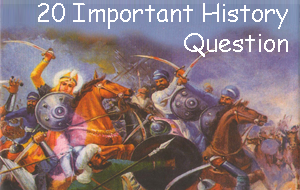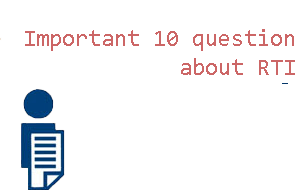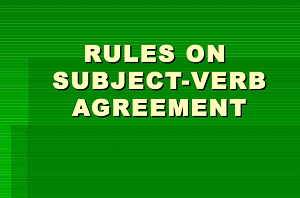Child Development and Pedagogy – PSTET Practice Set – 1 (MCQs)
Friends, below are the list of important MCQs of Punjab State Teacher Eligibility Test  (PSTET) – Child Development and Pedagogy
- Child Development (Primary School Child)
- Concept of Inclusive education and understanding children with special needs
- Learning and Pedagogy.
Request – If you get any answer wrong. please let us know, we will correct it
Practice Set – 1 | Practice Set – 2 | Practice Set – 3 | Practice Set – 4 | Practice Set -5 | Practice Set – 6
Q-1 Frobel’s most important contribution to education was his development of the–
a) Vocational school
b) Kindergarten
c) Public school
d) Latin school
Q-2 The best method of study growth and development of child is:-
a) psychoanalytic
b) Comparative method
c) Development method
d) statistical method
Q-3 Which of the following is true statement corresponding to Cephalocaudal principal of
a) Development is from head to foot
b) Development is from foot to head
c) Development is from middle to periphery
d) None of these
Q-4 Vygotsky proposed that Child Development is–
a) Due to genetic components of a culture
b) A product of social interaction
c) A product of formal education
d) A product of assimilation and accommodation
Q-5 Gardner formulated a list of Seven Intelligencies, which among the following is not one of them?
a) Spatial Intelligence
b) Emotional Intelligence
c) Interpersonal Intelligence
d) Linguistic Intelligence
Q-6 Determinates of individual diffrences in human being is relate to :
a) Diffrence in environment
b) Diffrence in heredity
c) interaction between heredity and environment
d) Both heredity and environment interacting separately
Q-7 When a child ‘fails’, it means
a) the child has not memorized the answers properly
b) the child should have taken private tuition
c) the system has failed
d) the child is not fit for studies
Q-8 Navodaya Schools have been established to
a) increase number of school in rural areas
b) provide good education in rural areas
c) complete ‘Sarva Shiksha Abhiyan’
d) check wastage of education in rural areas
Q-9 The emphasis from teaching to learning can be shifted by
a) adopting child-centred pedagogy
b) encouraging rote learning
c) adopting frontal teaching
d) focusing on examination results
Q-10 Inclusive Education
a) celebrates diversity in the classroom
b) encourages strict admission procedures
c) includes indoctrination of facts
d) includes teachers from marginalized groups
Q-11 If a child writes 16 as 61 and gets confused between Band D, this is case of–
a) Visual Impairment
b) Learning DisabilityÂ
c) Mental Impairment
d) Mental Retardation
Q-12 Which of the following is an objective question ?
a) Short answer question
b) Open ended question
c) True or False
d) Essay type question
Q-13 Which of the following is a feature of progressive education ?
a) Instruction based solely on prescribed text-books
b) Emphasis on scoring good marks in examinations
c) Frequent tests and examinations
d) Flexible time-table and seating arrangement
Q-14 A child has been admitted to your school who belongs to a back ward family/background from the cultural viewpoint. You will
a) Keep him in a class in which, there are many more students of backward background from the cultural viewpoint
b) Send a teacher to know more about the backward cultural background of the child
c) Keep him in a normal class but will make special arrangements for teaching him, keeping his special needs in view
d) Advise him to take up vocational education
Q-15 Critical pedagogy firmly believes that
a) the learners need not reason independently
b) what children learn out of school is irrelevant
c) the experiences and perceptions of learners are important
d) the teacher should always lead the classroom instruction
Q-16 A teacher, after preparing a question paper, checks whether the questions test specific testing objectives. He is concerned primarily about the question paper’s
a) content coverage
b) typology of questions
c) reliability
d) validity
Q-17 Cognitive Development means–
a) Development of intelligence
b) Development of child
c) Development of Physical Skills
d) Development of individual
Q-18 School-based assessment is primarily based on the principle that
a) teachers know their learners’ capabilities better than external examiners
b) students should at all costs get high grades
c) schools are more efficient than external bodies of examination
d) assessment should be very economical
Q-19 Learners display individual differences. So a teacher should
a) provide a variety of learning experiences
b) enforce strict discipline
c) increase number of tests
d) insist on uniform pace of learning
Q-20 The term ‘Mnemonics’ is associated with
a) Memory
b) Amnesia
c) cognitive behaviour
d) Anaemia
Q-21 Frobel’s most important contribution to education was his development of the
a) Public high school
b) Latin School
c) Vocational school
d) Kindergarten
Q-22 ‘Gang age’ period refers to
a) Infancy
b) Preadolescent
c) Teen age
d) Adult
Q-23 If you find a child in your class who always isolates from the rest of the class, you would …
a) ask the child to be normal by taking example of his classmates
b) try to understand the underlying clause
c) leave the child alone so that the child comes out of his own
d) inform the management that his presence may effect other students of the class.
Q-24 A child cannot distinguish between ‘saw’ and ‘was’, nuclear’ and ‘unclear’. S/He is suffering from
a) dyslexia
b) word jumbling disorder
c) dyslexemia
d) dysmorphemia
Q-25 A child of 16 years scores 75 in an IQ test; his mental age will be ________ years.
a) 12
b) 8
c) 14
d) 15
Q-26 Adolescents may experience
a) feeling of self-actualization
b) feeling of satiation about life
c) anxiety and concern about themselves
d) feeling of fear about sins committed in childhood.
Q-27 Vygotsky theory implies
a) child will learn best in the company of children having IQ lesser than his/her own.
b) collaborative problem solving
c) individual assignments to each student
d) after initial explanation, do not support a child in solving difficult questions
Q-28 Gifted students are
a) non-assertive of their needs
b) independent in their judgements
c) independent of teachers
d) introvert in nature
Q-29 Assessment for learning takes into account the following except
a) mistake of students
b) learning styles of students
c) strengths of students
d) needs of students
Q-30 Which one of the following is an example of a fine motor skill?
a) climbing
b) hopping
c) running
d) writing
Q-31 Which would be the best theme to start with in a nursery class?
a) My best friend
b) My neighbourhood
c) My school
d) My family
Q-32 In order to instil a positive environment in a primary class a teacher should
a) wish each child in the morning
b) narrate stories with positive endings
c) allow them to make groups on their own on the basis of sociometry during group activities.
d) not discriminate and set the same goal for every child.
Q-33 Successful inclusion requires the following except
a) involvement of parents
b) capacity building
c) sensitization
d) segregation
Q-34 IQ scores are generally ________ correlated with academic performance.
a) least
b) perfectly
c) highly
d) moderately
Q-35 An empowering school will promote which of the following qualities the most in its teachers?
a) tendency to experiment
b) memory
c) disciplined nature
d) competitive aptitude
Q-36 A teacher can make problem-solving fun for students by doing all the following except
a) providing open ended material
b) giving time for free play
c) providing endless opportunities for creative thinking
d) expecting perfection from the students while they are trying to do things by themselves.
Q-37 Socialization is a process by which children & adults learn from:
a) Family
b) School
c) Peers
d) All of these
Q-38 In which stage is the Physical growth is rapid
a) Early childhood
b) Infancy
c) Adolescence
d) School age
Q-39 The Stage in which the “Self Initiative Skill†of a child develops when it is let free
a) 2-3 years
b) First year
c) 6th year onwards
d) 4-6 years
Q-40 An apparatus to find the span of visual attention is:
a) Tachitoscope
b) Telescope
c) Learning Cards
d) Ink Blot Test
Q-41 The two factor theory of intelligence was proposed by
a) Spearman
b) Wechsler
c) Piaget
d) Binet
Q-42 The term that does not coincide with the styles of learning
a) Oral learning
b) Continuous learning
c) Comparative learning
d) Rote learning
Q-43 “Child should be treated as child†– was said by
a) Roussoue
b) Wechsler
c) Binet
d) Gagne
Q-44 Piaget’s principle is related to child’s _____________
a) Psychological Development
b) Emotional feelings
c) Cognitive Development
d) Physical Development
Q-45 A Person believes that nurture strongly influences the development of his child. He would not agree with the importance of:
a) Genetic factors
b) Exposure to peers
c) The types of toys at home
d) The warmth displayed by the parents
Q-46 Long term memory is through
a) Learning by Reading
b) Learning by Listening
c) Learning by multi sensory organs
d) Learning by visualizing
Q-47 Child development is defined as a field of study that
a) Examines change in human abilities.
b) Seeks to explain behaviour across the life span.
c) Compares children to adults to senior citizens.
d) Accounts for the gradual evolution of the child’s cognitive, social, and other capacities.
Q-48 The best method to study growth and development of the child is–
a) Psychoanalytic Method
b) Comparative Method
c) Developmental Method
d) Statistical Method
Q-49 Determinants of Individual differences in human beings relate to–
a) Differences in Environment
b) Differences in Heredity
c) Interaction between Heredity and EnvironmentÂ
d) Both Heredity and Environment interacting separately
Q-50 Which of the following does not belong to the categories of coping strategies that women commonly engaged in
a) acceptance
b) Resistance
c) Revolution
d) Adaptation
Request – If you get any answer wrong. please let us know, we will correct it
Practice Set – 1 | Practice Set – 2 | Practice Set – 3 | Practice Set – 4 | Practice Set -5 | Practice Set – 6













how we can downloadit
hello sir,
your efforts are really helpful for us. Thanks alot sir. sir jis tara tusi sada type test clear karwa ta use tara plz hun punjab tet vich v help karna . sir plz notes download ho sakan awe pado g ….print kada k padna hunda tahi tiyari vadia hunde aa. plz ena notes nu pdf format ch pado and let us know k hun ase ena nu save karke v pad sakde aa. … and sir plz social studies de v notes pa do g. Thanks a lot
please upload these practice tests in PDF format……..
Sir….notes lyi thanks…ki sanu eh sare notes set easily kida mil skde ne….?ki pdf for met Me mil Jaye gye? ?Taki easliy pade Ja ske
Please upload soon these msq
Sir i confused for set 1 Q.no 24 ans. it may be ‘word jumbling disorder’